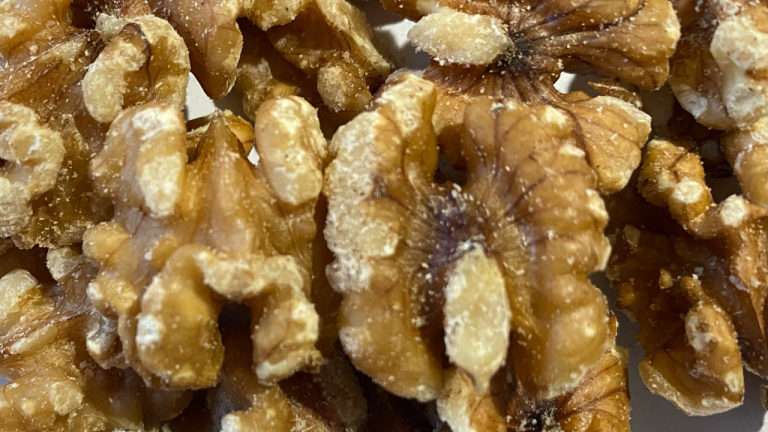Walnut 's nutrition profile might be one of the reasons why walnuts are a popular nut. Just how popular they are is difficult to determine. The internet did not provide any great resources for current walnut production or consumption. Most of the data was old, as a result, I am leaving those statistics out. Read on to find out why walnuts are a great addition to a healthy diet regardless of whether they are widely consumed.
Average Walnut Nutrition Information
Two sources (Healthline and Verywell Fit) reported similar numbers. This is based on a 1 ounce or a 30-gram serving size. If you don't have a scale, this is about 14 halves.
Calories: 185
- Water: 4%
- Protein: 4.3 grams
- Carbs: 3.9 grams
- Sugar: 0.7 grams
- Fiber: 1.9 grams
- Fat: 18.5 grams
Dissecting Walnut Nutrients for Health
First, walnuts are a great source of healthy fats. In fact, they are one of the few non-fish sources of omega 3s. The fat they contain is alpha-linolenic acid (ALA). ALA contributes to between 8-14% of the total fat content. ALA is converted to eicosatetraenoic acid (EPA) and docosahexaenoic acid (DHA).
Second, walnuts are rich in minerals. They contain around 40% of the recommended daily value of manganese. They are also a source of magnesium, zinc, iron, potassium, and selenium.
Third, walnuts contain good amounts of some B vitamins.
Finally, walnuts contain a high amount of phenolic and flavonoid compounds. These compounds make them high in antioxidants.
Wild Black Walnuts - Juglans Nigra
Most of the walnuts that are sold and consumed are English Walnuts. Of course, I always try to tie my blog posts back to residential trees. Black walnut trees are common in many states including Virginia. They usually are not grown in orchards like English walnuts. Supposedly, black walnuts are more nutritious than English walnuts. Here is a photo of a wild black walnut.


